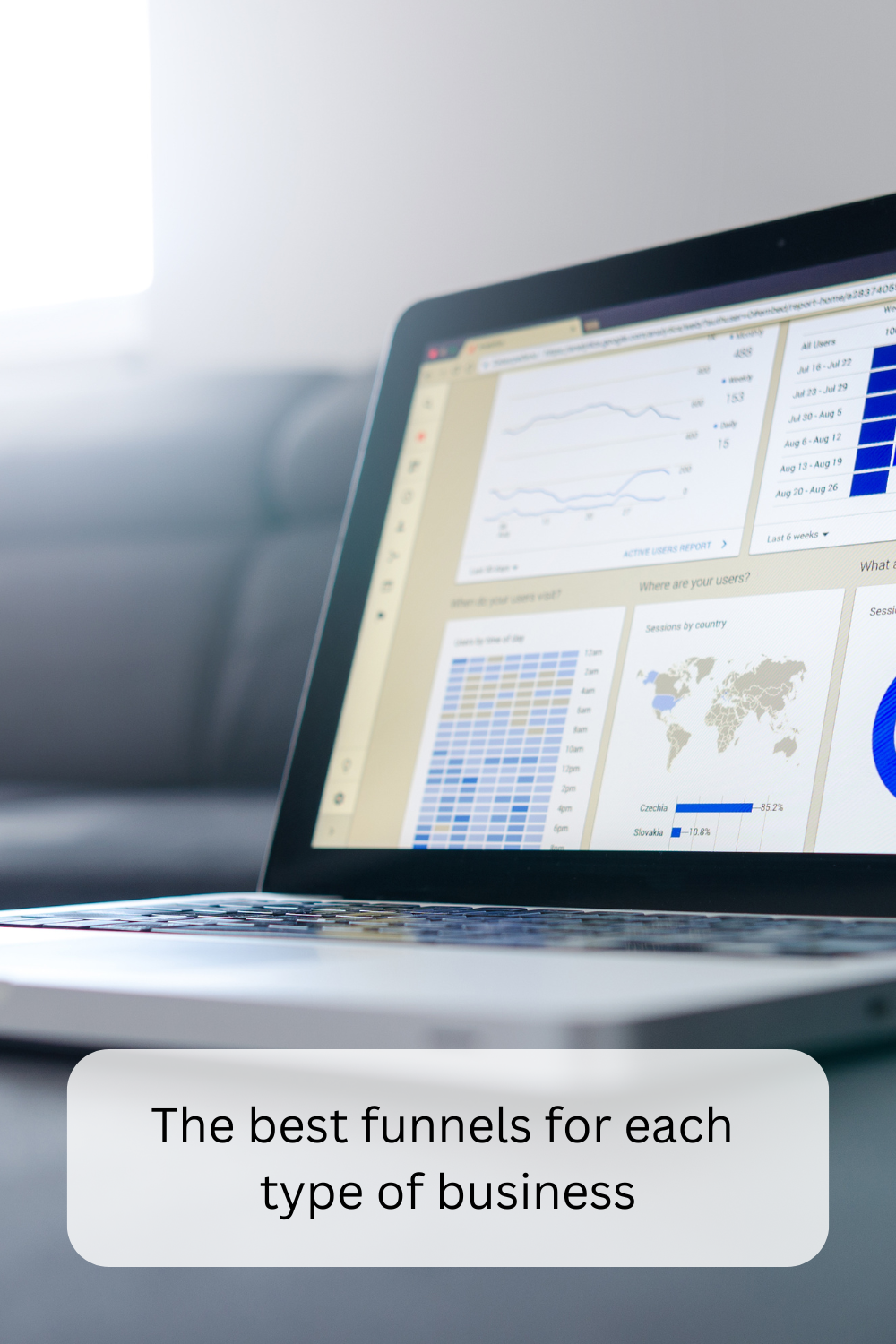If you want to succeed with your business, you can’t avoid building an online presence. Whether you have an online or offline business, a website can increase your reach and your sales.
However, it would be best if you had a funnel to attract new customers to your website. But what types of funnels are there, and which ones are ideal for your business?
In this article, I’ll show you the six most important funnels and their applications in business.
If you want to use and customize these funnels, you can use ClickFunnels. ClickFunnels’ Share Funnel feature lets you easily import the funnel into your account. You can check out my review here if you haven’t heard of ClickFunnels before.
Best-selling funnel for books
The first funnel we want to look at is the Best Selling Book Funnel.
Who is this funnel for?
The best-selling book Funnel is designed for authors and coaches who want to sell more copies of their books and earn more money from each sale.
What does this funnel look like?
This funnel has three pages and starts with a free shipping offer on the front page. The goal is to give the book away for free and then make money from higher-priced products.

If you sell a book for €20 each, you usually can’t make much more money than the €20 per sale. However, adding additional products as an upsell can increase the average shopping cart value. This means that each customer pays more money (on average), which means you make more money from each new customer.

This in turn means that you can spend more on marketing for each customer. This means that your campaigns will be more profitable on the one hand and on the other hand you can use them to outdo competitors.

Click here to import the Best Selling Book Funnel.
Fishbowl Funnel
The next funnel we’ll look at is called the Fishbowl Funnel.
Who is this funnel for?
This funnel is primarily intended for local businesses that want to generate more leads and customers. It is ideal for doctors, fitness studios, shops and many other businesses.
Do you have a restaurant? Then check this out!
What does this funnel look like?
The first page of the fishbowl funnel is usually an opt-in page. The lead magnet depends on the type of business. For example, it
People always want something for free, so this is a great way to generate leads.

The next step in this funnel is usually an offer the visitor can sign up for. This could be a discount for a membership or a product. Using the café as an example, it could be something like “Get three coffees for the price of two!”

This offer should convert a lead into a customer and entices them to visit your store.

Finally, visitors are given information on how to redeem the voucher or coupon.
Click here to import the Fishbowl Funnel.
The Product Launch Funnel
The next funnel we’ll look at is the Product Launch Funnel.
Who is this funnel for?
This funnel is ideal for companies launching a new product or service. Examples include trainers who want to introduce a new coaching program and B2B companies who want to offer a new service.
What does this funnel look like?
The first step of the funnel is a squeeze page where the visitor enters their email address and name to access a free training session. After that, they receive a series of training videos that gradually get the visitor interested in the new product (this is also often referred to as reframing).

Preframing means showing your prospect why your product will help them in a certain way. For example, you want to sell a product called “Funnel Builder Secrets” to your audience. In the training, you show the customer how to set up a sales funnel, etc.

Maybe your audience (book authors) knows nothing about funnels. Then, you can create a training course about sales funnels that explains the psychology behind them and why they are important for their business.
After that, your audience will know exactly what a funnel is and why your offer is irresistible.
The videos can also be demos of your new software, showing what problem it solves and how it can help your audience.
This funnel is typically used for high-priced coaching or software launches.
Click here to download the Product Launch funnel.
The Perfect Webinar
Now, let’s take a look at the Perfect Webinar funnel. I think the name says it all: This funnel is based on webinars, and there are two different types of webinars.
There are live webinars and auto webinars. Live webinars are conducted live by the webinar speaker. This is great because it allows the speaker to respond to questions from the audience live and get live feedback.
Auto webinars are pre-recorded and the audience only sees a recording. This makes it easier to host more webinars in a shorter period (e.g. every hour, 30 minutes, 15 minutes, etc.) and to automate the entire funnel.
Even though the desire for automation is always great, it certainly makes sense to start by hosting live webinars to test how well the webinar converts and where there is room for improvement.
Who is this funnel for?
This funnel is for people who want to sell their product through a webinar. These can be trainers, companies that want to sell their services and affiliates.
What does this funnel look like?
The first page of this funnel is the registration page for the webinar. Here, the visitor receives some information about the webinar’s content and when it will take place.

After leaving their email and name, visitors will arrive at a confirmation page. Here, the visitor usually receives a self-liquidating offer (SLO). This means that you normally have to spend some money to attract each visitor to your website.

After they sign up for your event, you give them the option to buy your book or start a free trial or something similar. The goal is to get back as much money as you spent on advertising. If you spend $1,000 on advertising, the goal should be to get $1,000 back with your SLO.
You’ve generated free leads if you invest $1,000 and immediately get $1,000 back. And every sale you make through your webinar is 100% profit.
If you want to know how to structure your webinar to get the maximum conversion, I recommend the book Perfect Webinar Secrets by Russell Brunson.
Click here to import the Perfect Webinar Funnel.
The Real Stuff Funnel
Next, let’s look at the Real Stuff Funnel. As the name suggests, this funnel is for real things or physical products.
Who is this funnel for?
This funnel is for owners of eCommerce stores or people who want to sell their physical products.
What does this funnel look like?
The first page of the Real Stuff Funnel is a sales page. The product on the first page is usually a low-priced item to get people into the funnel. After the first offer, an upsell page increases the average shopping cart value.

Either the customer gets the chance to get more items of the product for a lower price (3 for the price of 2), or they get additional items that they might need. Since you have to pay the same money for each new business customer, your goal is to increase the revenue per customer or the average shopping cart value.

Click here to import the Real Stuff Funnel.
The Network Marketing Bridge Funnel
The last funnel is the Network Marketing Bridge Funnel. This funnel is mainly used to generate leads and sell products from other manufacturers. These can be both affiliate marketing and network marketing products.
Who is this funnel for?
This funnel is intended primarily for network and affiliate marketers.
What does this funnel look like?
The network marketing bridge funnel consists of two steps. The first step is an opt-in page to generate leads. In the second step, there is a so-called bridge page. A bridge page prepares the target group for the affiliate/network marketing offer.

If you send people directly to the sales page of an affiliate offer right after you opt in, they may have no idea why they are seeing the sales page and why this product is important to them.

That’s why you need to educate or preframe your target audience. Show them why it’s important for them to buy the product or join your team. Usually, a video from you can be very helpful. But text can also work well.
It depends on the type of product and the price.
Click here to import the network marketing bridge funnel.
Conclusion
In conclusion, every business needs a funnel, and for every business, you can use one of these six main funnels. A funnel can help you attract new leads and make more money from each lead.
If you have never come into contact with the topic of funnels before or would like to know more about them, I can highly recommend the book DotCom Secrets (read my review here)


One Reply to “The best funnels for each type of business”